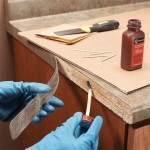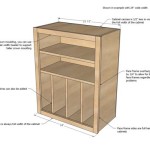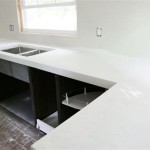How to Remove Smoke Stain From Kitchen Cabinets
Smoke damage can leave a lasting impact on your kitchen, especially on the cabinets. The soot and grime from smoke can penetrate deep into the wood, leaving behind an unsightly yellow or brown discoloration. While the task may seem daunting, removing smoke stains from kitchen cabinets is achievable with the right approach and cleaning techniques.
This article will guide you through the process of removing smoke stains from your kitchen cabinets, offering practical tips and valuable information. By following these steps and choosing the appropriate cleaning methods, you can restore your cabinets to their original beauty and reclaim the pleasant ambiance of your kitchen.
Assess the Damage and Prepare the Area
Before embarking on the cleaning process, it's crucial to assess the severity of the smoke damage. Determine the extent of the staining and the type of cabinet finish. Different finishes require different cleaning approaches. For instance, painted cabinets might require gentler treatment than natural wood cabinets.
Once you have assessed the damage, prepare the cleaning area. Clear the surrounding space, covering countertops and appliances with protective cloths or plastic sheeting to prevent accidental spills or splashes. Ensure adequate ventilation, as some cleaning agents release fumes. Wear protective gloves and a mask to safeguard yourself from harmful chemicals.
Cleaning Methods for Smoke-Damaged Kitchen Cabinets
The cleaning method you choose will largely depend on the type of cabinet finish and the severity of the smoke damage. Here are some effective methods you can consider:
1. Cleaning with Baking Soda Paste
For mild smoke stains, a baking soda paste can be effective. Mix baking soda with a small amount of water to create a thick paste. Apply the paste to the affected areas using a soft cloth or sponge. Allow it to sit for a few minutes before gently scrubbing the area. Rinse the paste thoroughly with clean water and dry the cabinets with a soft cloth.
2. Using a Commercial Cleaning Solution
Numerous commercial cleaners specifically designed for removing smoke damage are available on the market. These cleaners contain ingredients that effectively break down soot and grime, leaving behind a clean surface. Carefully read the instructions on the product's label and follow them meticulously. Apply the cleaner to the affected areas using a soft cloth or sponge. Allow it to sit for the recommended time before wiping it away with a damp cloth. Ensure that the cleaning solution is compatible with your cabinet finish to avoid damage.
3. Employing a Cleaning Agent for a Specific Cabinet Finish
For natural wood cabinets, you can use a cleaning agent specifically formulated for wood finishes. These agents are typically available at hardware stores and come in various forms, such as sprays, liquids, and pastes. These agents are designed to remove dirt and grime without stripping the wood of its natural oils. When using a wood cleaner, ensure that it is safe for your cabinet finish by conducting a spot test in an inconspicuous area.
4. Removing Smoke Stains with a Degreaser
For heavy smoke stains, a degreaser can be helpful. Degreasers effectively remove grease and grime, which are often present in smoke damage. However, exercise caution when using degreasers, as they can be harsh on some surfaces. Apply the degreaser using a soft cloth or sponge, allowing it to sit for the recommended time before wiping it away with a damp cloth. Rinse the area thoroughly with clean water and dry with a soft cloth.
5. Utilizing a Paint Thinner
In extreme cases, you may need to use a paint thinner to remove stubborn smoke stains. Paint thinner is a highly effective but potentially dangerous solvent, so exercise extreme caution. Always work in a well-ventilated area and wear protective gloves and a mask to avoid inhaling the fumes. Apply the paint thinner sparingly to the affected areas using a soft cloth. Allow it to sit for a few minutes before wiping it away with a clean cloth. Rinse the area thoroughly with clean water and dry with a soft cloth. Be mindful that paint thinner can damage some finishes, so test it in an inconspicuous area first.
Restoring and Protecting Your Cabinets
Once you have successfully removed the smoke stains, it's essential to restore and protect your cabinets. For natural wood cabinets, consider applying a wood polish or sealant to restore their shine and protect them from future damage. For painted cabinets, you may need to repaint them if the finish has been compromised by the smoke damage.

Housecleaning Tips How To Clean Nicotine Stains

How To Clean Up Soot And Smoke Lapointe Construction Board Service

How To Clean Kitchen Cabinets Everyday Skate

How To Clean Cigarette Smoke Damaged Cabinets Hunker

How To Clean Smoke Damage From The Kitchen Creative Homemaking

How To Get Rid Of Kitchen Cabinet Stains

The Effects Of Home Damage On Household Items Restorationmaster

How To Clean Stains From Painted White Kitchen Cabinets Southwest

The Best Way To Get Smoky Smells Off Of Wood Furniture Jennifer Rizzo

What Do Professionals Use To Clean Smoke Damage From Fire
Related Posts








